Tomato Time!
Direct sowing has started in the kitchen garden and this week I finally got to sow the tomatoes while dreaming about the first asparagus spears in April.
Last weekend I kick-started the demonstration garden I wrote about on February 28th. Clean-up took a bit longer, because 2024 was a year of convalescence after pulmonary embolism, so my gardening was in minimalist mode last year. My husband cut back the European trivet and dogwood on the property line and light returned. Once that was cleared, I shaped up the paths and broadforked the beds to get a bit of oxygen down to the heavy clay subsoil. Anything taking up space was pulled or cut at the base and left as mulch. Bed prep took about an hour.

Although it’s difficult to see in the pictures above, there is a lot already emerging: chives, garlic chives, mint, walking onions, celery and parsley from last year. Random claytonia and lamb’s lettuce are filling out and I discovered a few lettuce seedlings. Sowing took 15 minutes, because I broadcast by the square meter and work the seeds in lightly with a garden rake. It’s the usual suspects for spring: One square meter each of ‘Muscade’ and ‘Paris Atlas Market’ carrots, with ‘De dix-huit jours’ (18-day) radishes sprinkled in. Red ‘Forino’ (a cylindrical type) and yellow ‘Burpees Golden’ beets take up one square meter in small rows to accommodate multi-germ varieties that sometimes have to be thinned. I plant the extras in-between the rows to fill in the whole block. Then I found some forgotten root parsley seeds and decided to give them a chance by the chives.

I also sowed two square meters of my red-veined savoy spinach, originally a hybrid from England that I’ve grown out to become open-pollinated. It’s beautiful in salad mixes, which is what attracted me to it, but being dependent on a hybrid isn’t sustainable for me. When cooked, the red turns the water purplish and the leaves go a very dark green. Normally, I don’t sow spinach in spring because I have so much that overwintered, but I needed a crop that will finish by mid-May and act as a good green manure for peppers and zucchini. Spinach is a good choice for that, plus I’ll have extra to blanch and freeze.
Along the fences, snap peas are hopefully going to germinate soon. My favorite variety by far is ‘Taichung 13’, developed by the Taichung District Agricultural Research and Extension Agency in Taiwan. It grows to 2 m / 6 ft. and produces an abundance of long, fat snap peas that are wonderfully sweet and crunchy. The seeds I used are from 2018, so it’s time to start seed-saving if I can control myself and leave some to mature. If you’re looking for a snap pea variety that requires less support, I highly recommend the old favorite ‘Sugar Ann’ - reliable and easy to manage. Branches stuck in the ground will do for support; up to your knee suffices.
I’m also having to remove all of the Asian winter onions and leeks that overwintered because they’ve been infested with allium leaf miner, my bad for not paying attention last year and growing too many alliums in a small space. The infestation could be worse, only one or two pupae per leek, but they still mess up several layers. Chives, garlic chives, and European welsh onions seem to be spared, so those are staying, as are the walking onions. (See my comprehensive guide to the onion family for more about alliums.) The most effective organic deterrent, for those wondering, is insect netting. I’m too lazy to deal with that, so the alternative is scouting for eggs laid by the leaf miner fly.
Tomato time!
What a thrill to sow the tomatoes for this season! Seriously, my mouth starts to water just at the thought of it. My signature cherry tomato mix is always on the list, plus a beautiful beefsteak heirloom from South Tyrol called ‘Bozner Riese’, very similar to Brandywine types.
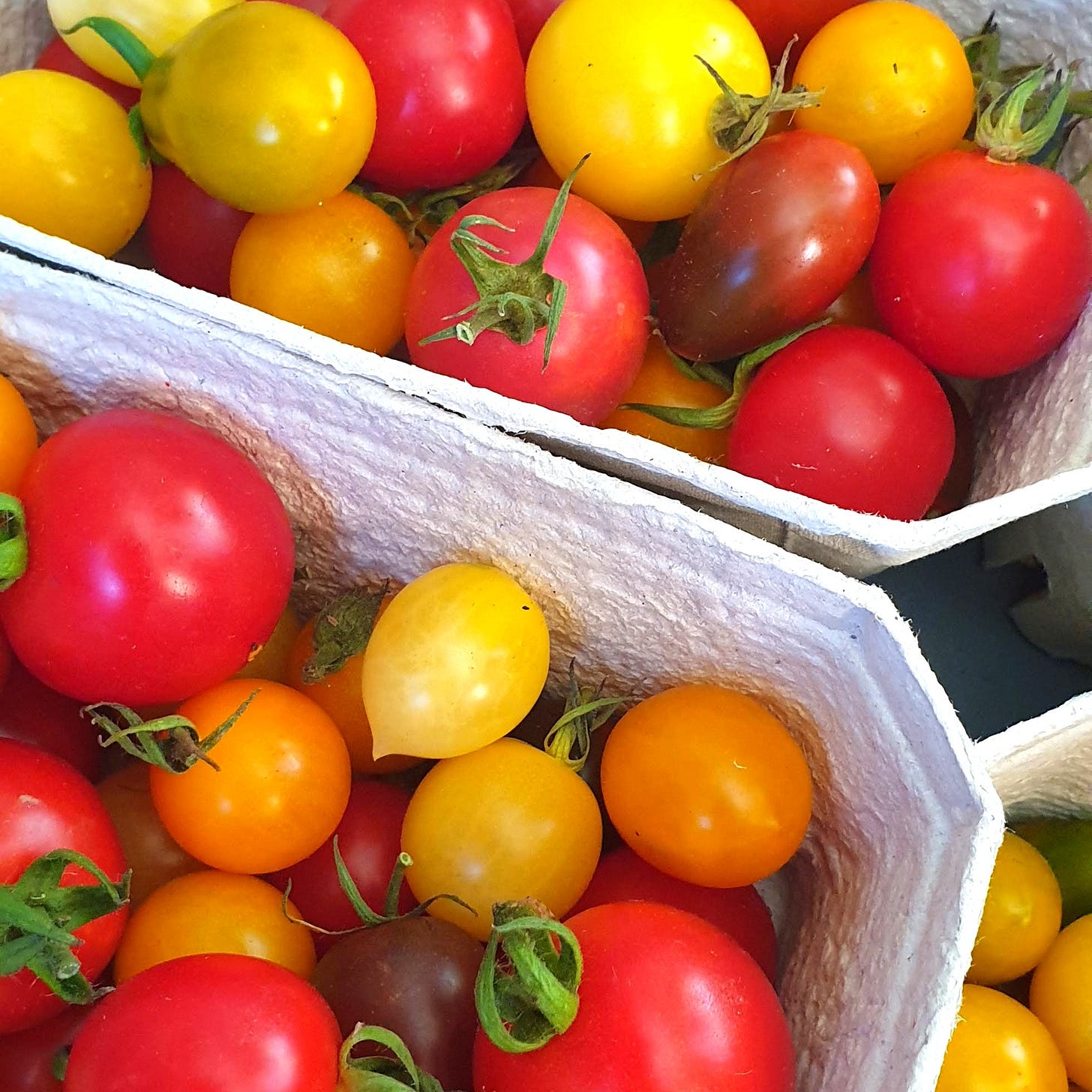
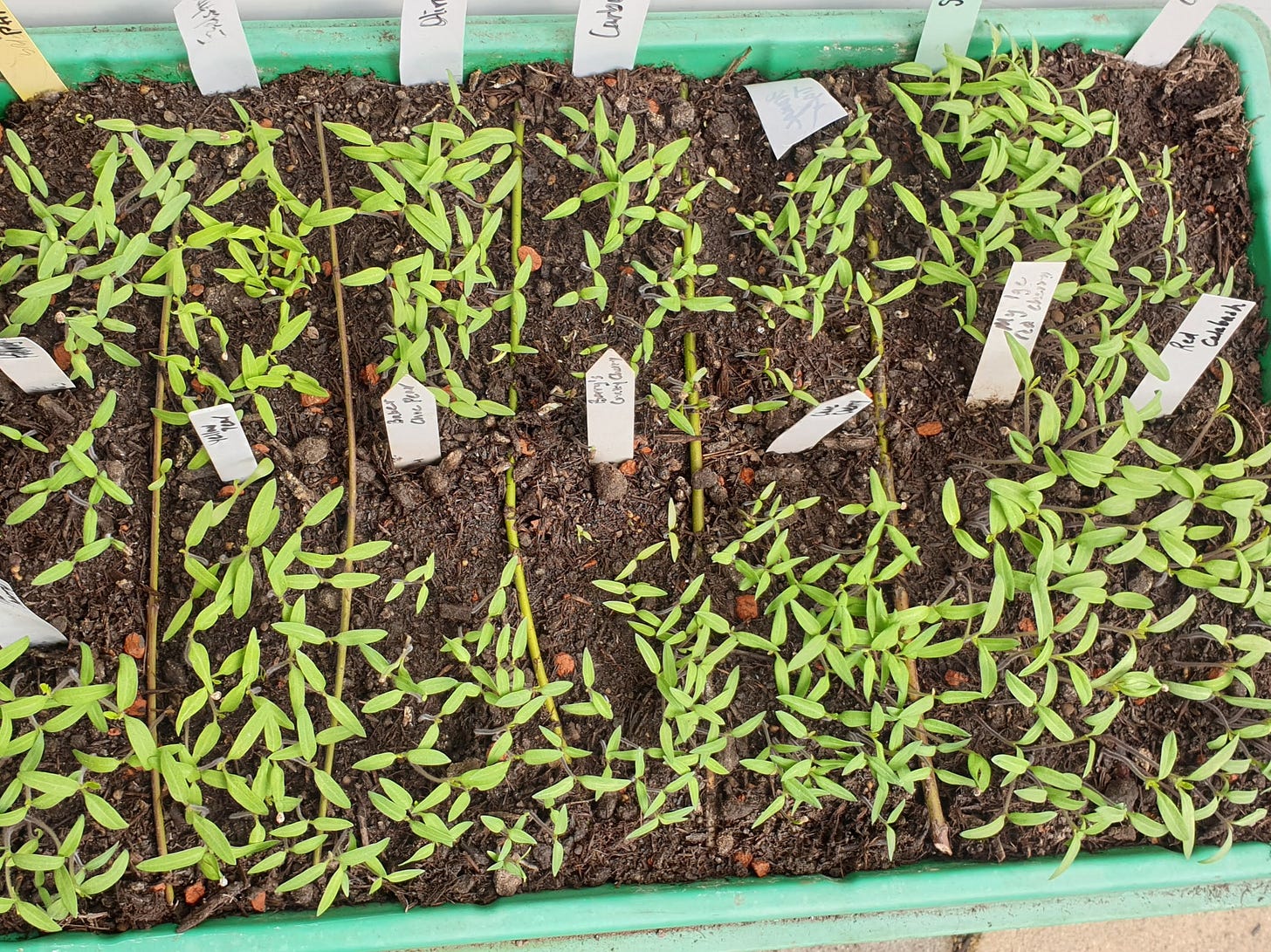
One of the things I’m looking forward to is another tomato tasting. I’m lucky to be surrounded by a few tomato freaks and there’s nothing better than coming together to compare varieties, each of us contributing from her own garden. Tomato sommelier should be a job, I swear. Each variety - and there are thousands - presents its own interpretation of sweet-acidic, meaty-fruity, juicy-dry, mild-intense. We need an aroma wheel for these fruits of paradise. (Locals here call tomatoes “Paradeiser”, etymologically related to “paradise,” referring to the red of the forbidden fruit.)
The best about a tomato tasting is experiencing new varieties. One of my favorites from a tomato-loving friend and heirloom seedsaver, Andrea, is ‘Red Calabash’, a Mexican heirloom that has made its way to Europe. It is a small salad tomato with the charm of the ribbed shape associated with large heirlooms. Its intense, iconically tomatoey flavor and brilliantly deep red make it a perfect tomato, in my book. Another must-have in the kitchen garden is ‘Orange Tiger’, a beautiful red salad tomato with orange stripes that boasts an excellent complex, rounded flavor and lots of juiciness for summer salads.
My other tomato task this week is sowing the top five selections of my pink cherry. After taking a break from serious gardening last year, it’s time to get back to growing it out. It started as an accidental cross from 2019 that appeared in a corner of a tunnel. Thankfully, I allowed it to grow and discovered a small miracle - beautifully pink, fruity flavor. More on that and growing tomatoes in the next “Deep Dive”.
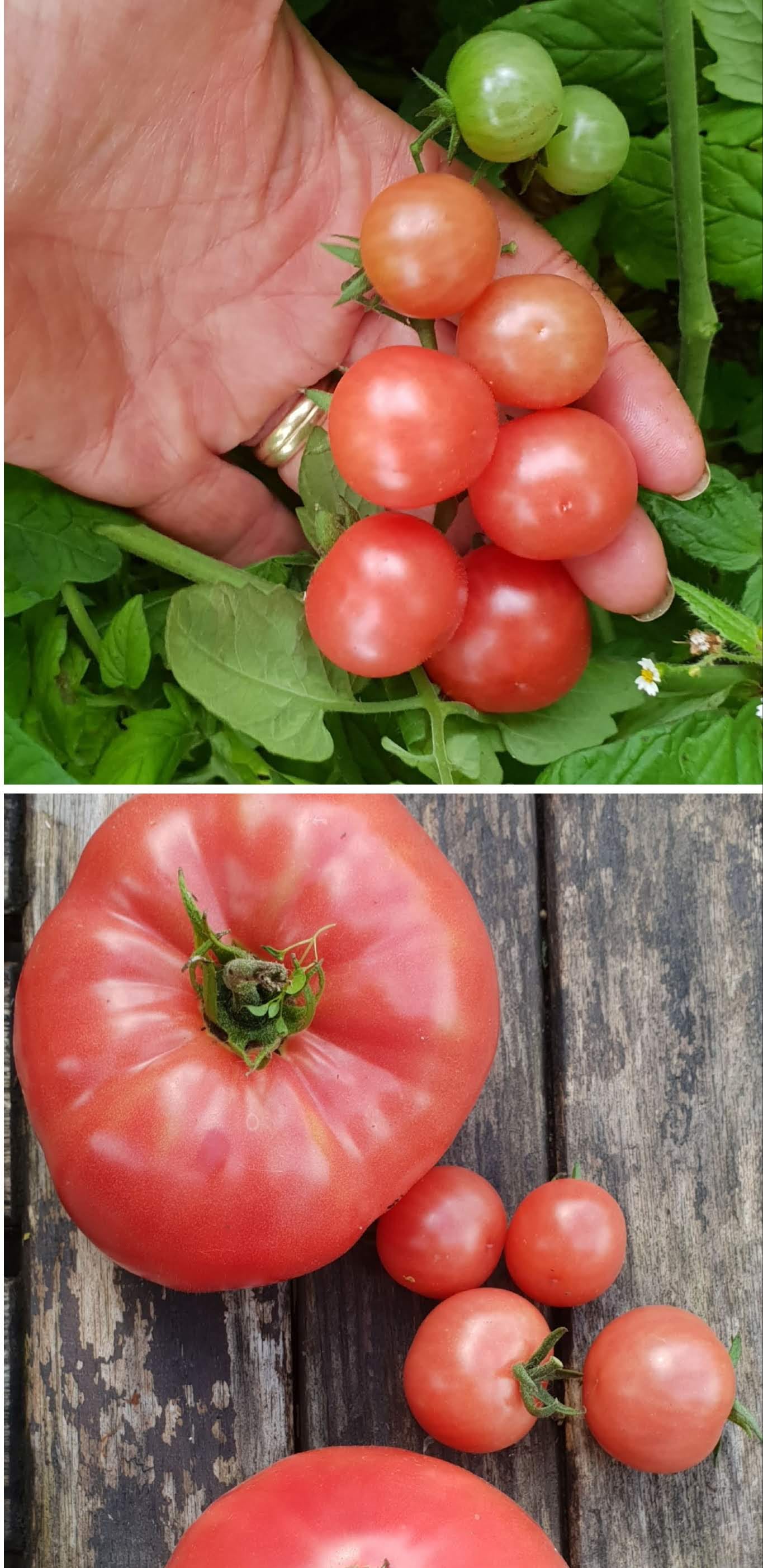
“Oh, you’re the asparagus lady!”
While I was sowing the tomatoes, I was dreaming of the first asparagus spears. My mother served green asparagus at least once a week, a luxury that was just normal life on our farm. We had a good-sized patch of about 2x4 m / 6x12 ft., which fed our family of four well. There was always asparagus in the freezer.
When I came to Europe, I was in for a shock. First, asparagus was ridiculously expensive. Secondly, in the 1990s only thick white stalks of blanched asparagus were available in Austria. It’s a celebrated seasonal delicacy, usually served with ham and potatoes with hollandaise sauce. Production is complex, accounting for the high prices; blanched asparagus is grown in dams and hilled deeply to prevent the stalks from producing chlorophyl. It is harvested by hand with special knives that allow making a cut deep below the soil surface.
Sometime in the early 2000s, the less complicated green asparagus started to become available in Austrian supermarkets, imported from Italy. I prefer these more slender, green stalks, because they seem more flavorful.

I began my own asparagus patch while we were still living in the Tyrolean Alps near Innsbruck. Growing asparagus is a real commitment, not least due to the three years of waiting to let plants get established before the first harvest. Little did I know that we would be moving to Burgenland in southeastern Austria a few years later! I moved the plants and started with another waiting phase of two years to let them get established. Our first harvest here was two years ago. My asparagus patch was newsworthy enough to be included in an Austrian TV program called “Back to Nature.” We had to film in April, which was actually too early to be planting the asparagus I had started from seed, but I sacrificed a few plants anyway. In May, the day after it aired, I was in the hospital for a routine procedure and the nurse looked at me and said, “Oh, you’re the asparagus lady!”
I’ve been expanding the patch each year, so I usually sow seeds in January, but March is still possible for anyone wanting to have a go. I sow them relatively densely in a smaller container, then I pot them up six weeks later. By July, their roots are well developed and they can be planted out. Compared to buying crowns or plants, starting from seed only costs an extra year of patience and it saves a ton of money.

What’s coming up this week
Two weeks of unusually warm weather has come to an end. We really need rain, a good, long day of gentle showers, but we're settling for whatever we get.
This week, I’ll be:
tending the hundreds of transplants starting to take up more space and time
prepping beds in the market garden
planting out lettuce and bunching onions
Weather permitting, I’ll also be in the forest this weekend, foraging for wild garlic with a friend.
Tips:
Whenever possible, water transplants from the bottom, especially if they’re indoors with little air circulation.
The leaves and stems of plants thicken and grow stronger when they are exposed to wind or touch, because it initiates hormone production. I just put my peppers out for a wind bath this week, because our southern wind from the Mediterranean was blowing. You can mimic this by raking your hand over the transplants. Note: wind treatment is only wise when the plants have well-developed roots!
Wishing you a good gardening week!



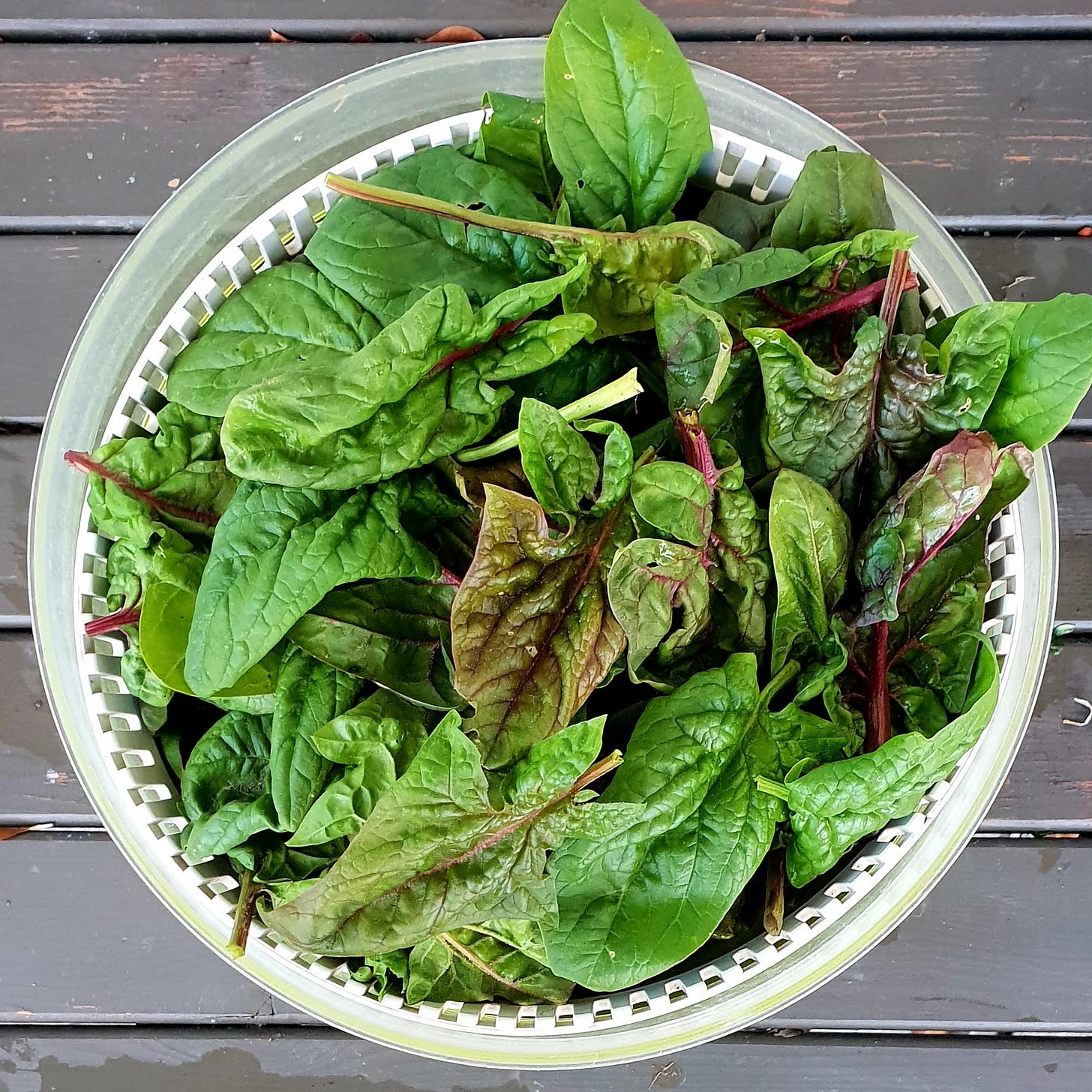
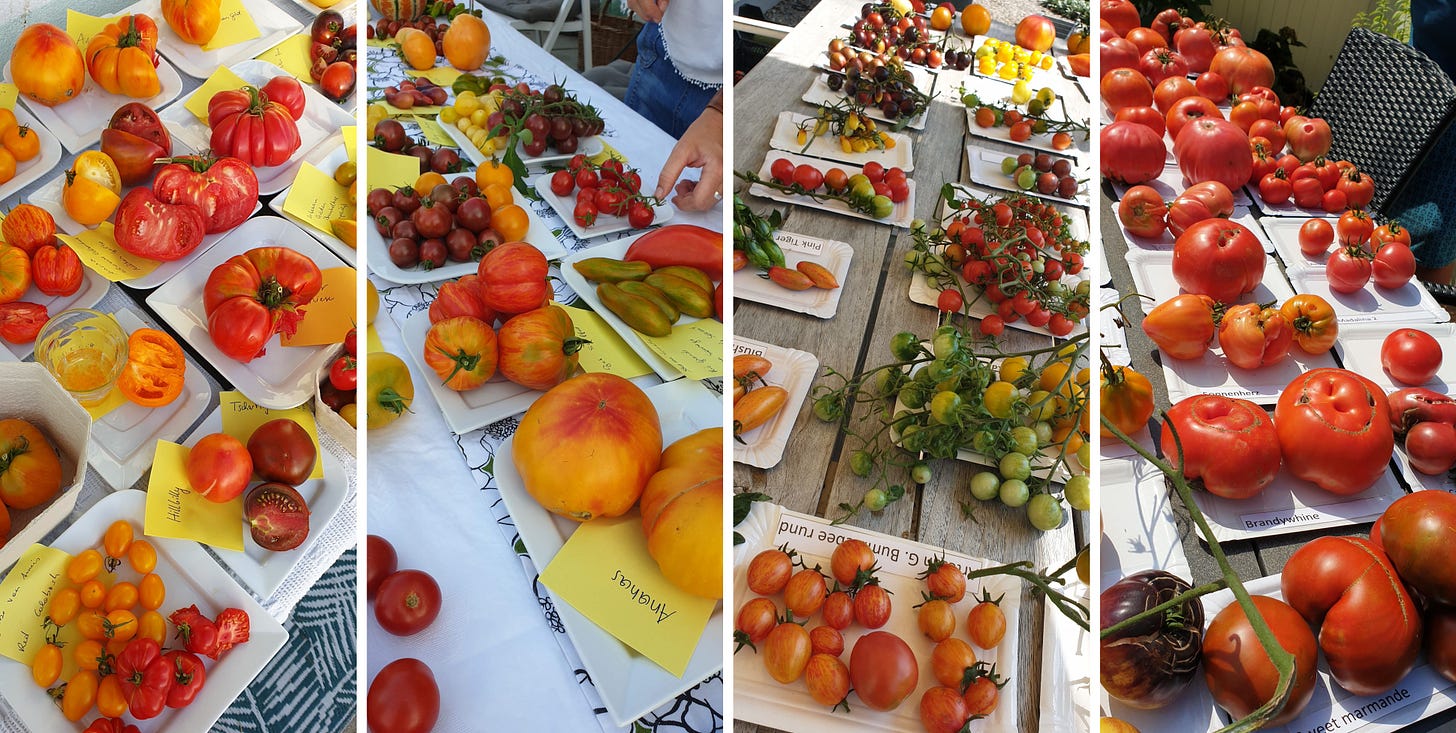

My mom also foraged wild asparagus, although we had enough. She didn't waste anything, when it came to feeding us. I don't think cutting it back in winter will be a problem. Everyone in my region (Austria) has to, to prevent damage from asparagus beetles - unfortunately, it's a thing here. They should be fine.
I used to have a huge amount of wild asparagus growing along my fence, so I never planted it, but my husband cut it back in the winter and I think it will take another season to come back. I'm so sad.